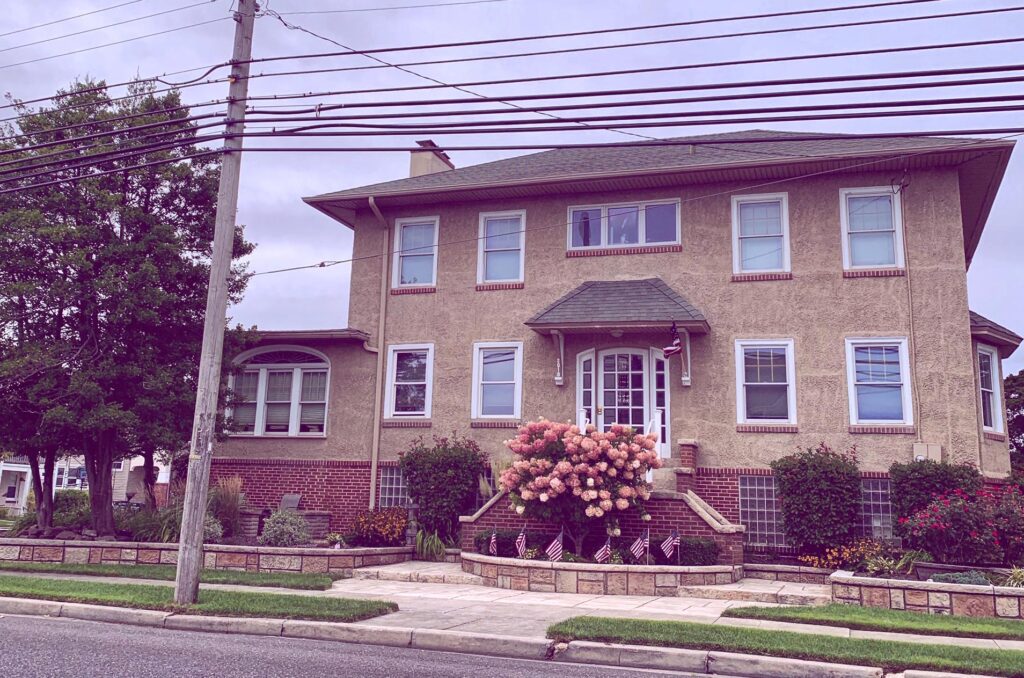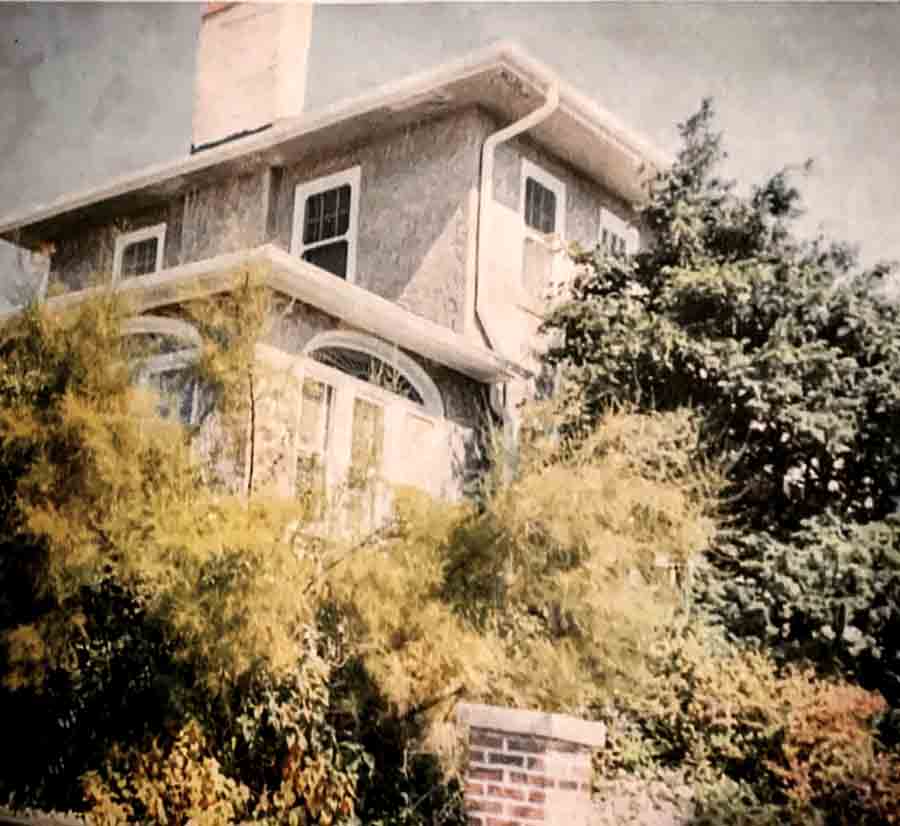by Taylor Henry

At the northwest corner of Atlantic and 21st Avenue in North Wildwood stands a handsome, prairie-style stucco estate lined by gardens. Although the house today looks like a perfect second home for the Great Gatsby, it wasn’t always so. Very recently, neglect threatened to end this home before its 100th birthday, but it’s thanks to current owner Al Weiss that his home lived to see the 2020s.
This house was built in 1924 for the eccentric Bright family, a well-known name in the Wildwoods since the late 1800s. John Bright, esquire (b. 1878) married Emma, who was believed to be from the Carr family and they had three daughters, Emma, Naomi and Ruth. One of the daughters was a teacher at Margaret Mace grammar school. Bright passed the state Bar exam in 1921 and became a real estate lawyer. One of his cases which survived to the Internet age was 1927’s McKibbin v Pekarsky, wherein Bright defended Marine National Bank against a lien claim.
Bright’s home stayed in the family until it was sold in the 1990s but, during the Great Recession of the 2000s, the economy took a hit and the house went into disrepair. It wasn’t until the year 2010 when Al Weiss purchased 2010 Atlantic Avenue. “I wanted this house,” Weiss said in October 2019. “The house was on the market for a year and a half, and the price slowly decreased, so I came in and offered asking price.” Up until his purchase, untrimmed shrubs and ivy had engulfed the house and hid it from the street. This fixer-upper took an independent contractor two years to return it to its original state. Everything from the fireplaces to the light fixtures to the doors and windows was restored.
At the top of the front stoop is the original archtop front door. Latticed windows let the morning sun shine onto the foyer, giving the original hardwood floors a golden glow. There are no condos blocking the sunshine from pouring in. The foyer’s winding staircase is guarded by a two-foot statuette holding a torch, like the Statue of Liberty without a crown. The inscription below the statue reads “Chant Des Pres” which is French for “A nearby song.” She is original to the house, as is the foyer’s chandelier.
Like many Georgian Revival houses, the Bright home was built symmetrically: the rooms off to the left are the same size and proportions to the rooms on the right. The only exception — a common exception in historic houses — is the sunroom on the south side. This sitting room surrounded by fanlight windows originally served as John Bright’s law office. Weiss explained that the sunroom’s rear-facing exterior door was the entrance for Bright’s clients. The windows are made of blown glass with handmade imperfections to match; Bright’s brass nameplate still hangs on the door. Weiss hasn’t found any photos of Bright in his office, but he inferred how the office might have been arranged: “I know a couple of lawyers and they’re funny people because everything’s strategic,” he said. “[Bright] probably wanted the sun on his back and facing the fireplace, so I’m assuming his desk was arranged that way.”
Weiss added his own touches to the house, customizing the kitchen and displaying an antique scale in each room. A mechanic by trade, Weiss spent years working for Toledo Scale Company and later as an auto mechanic. In addition to restoring the Bright house, Weiss also stabilized and restored the garage out back. He agrees that historic houses are worth the trouble and deserve to be restored. It’s thanks to Old House Heroes like Al Weiss that the Wildwoods’ history can be preserved for years to come.

